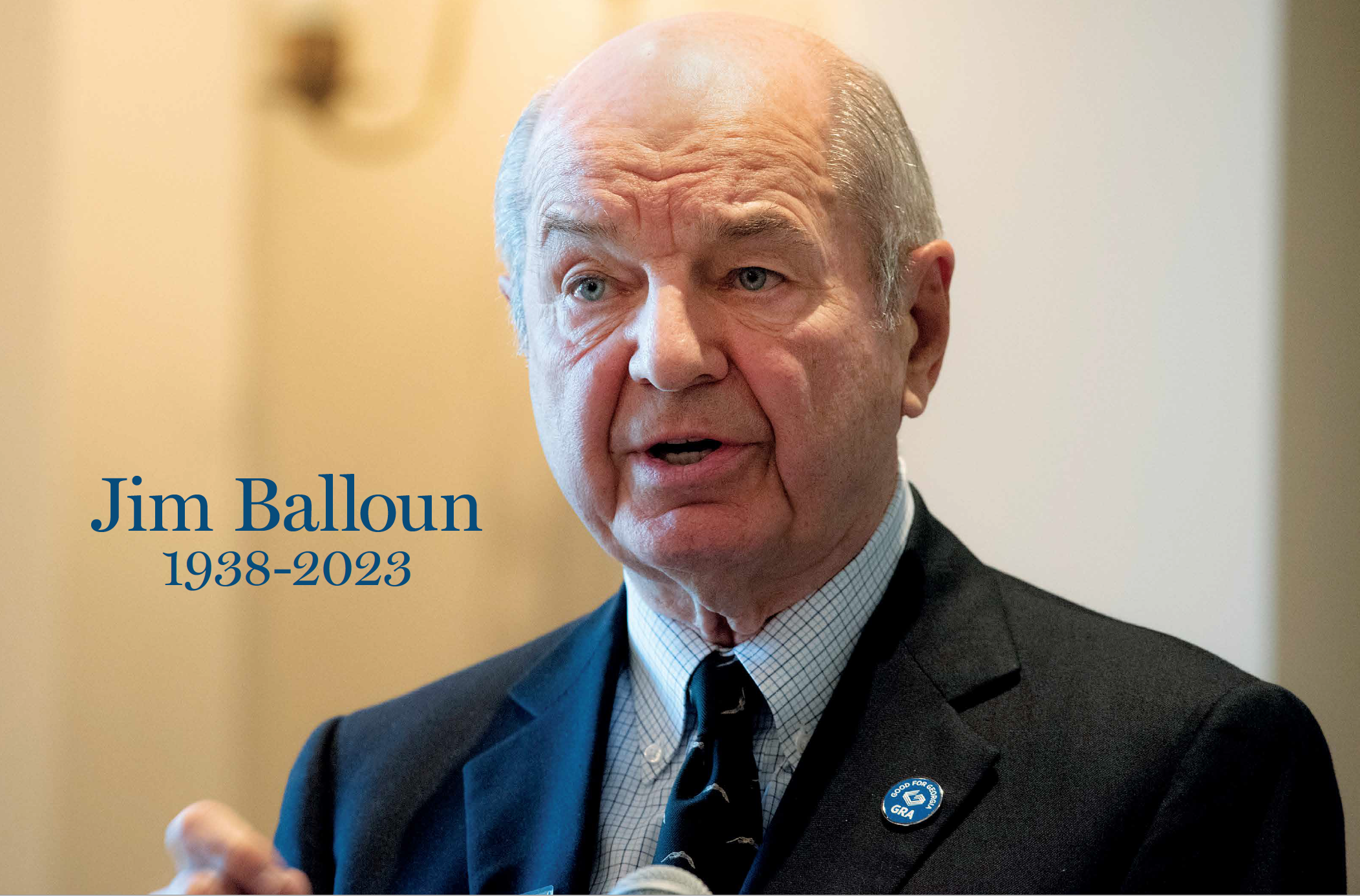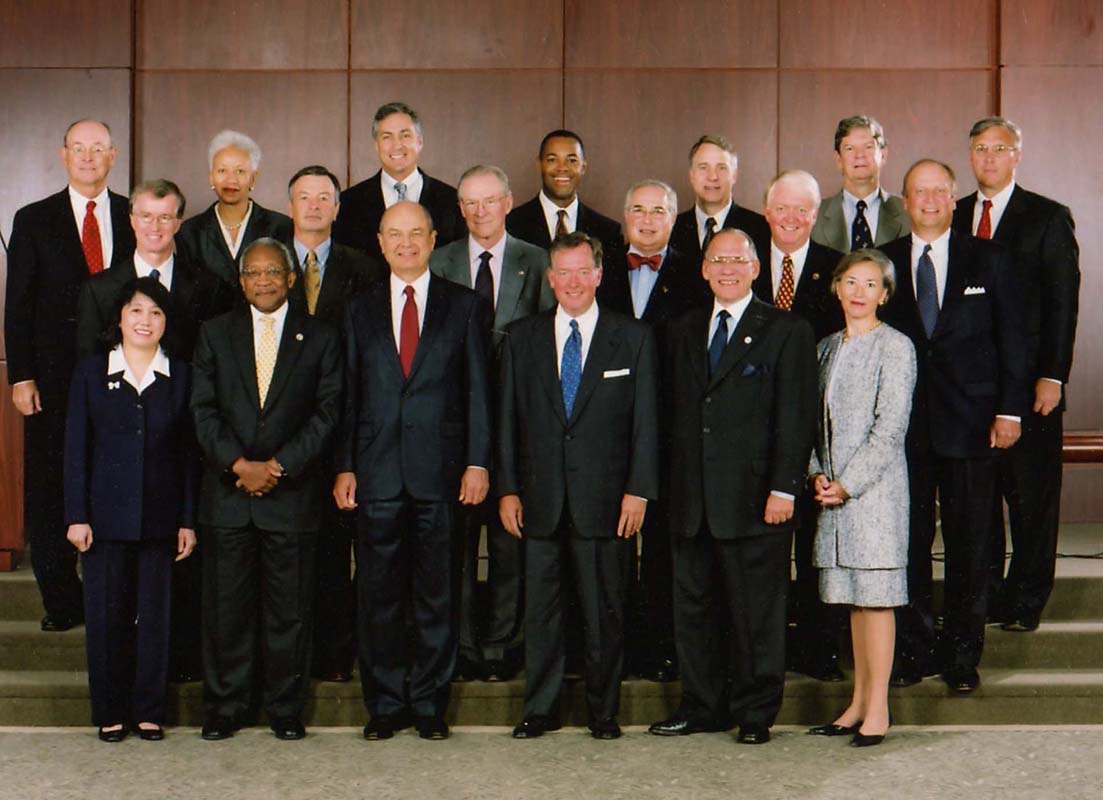

Remembering a true champion of GRA
Back in the 1980s, Georgia wanted to know: How did Boston, Silicon Valley and eastern Carolina all become research and innovation centers?
To answer that question, a small group of state leaders in business and government called on Jim Balloun, then senior partner and co-founder of McKinsey & Co.’s Atlanta office.
Already on the table was an idea to create an organization that would expand research at Georgia’s universities and strengthen collaboration among them. In leading a team to explore America’s most successful innovation hubs, Jim would conduct due diligence on the Georgia idea.
When we learned last Saturday of the unexpected passing of Jim Balloun, we thought first of the role he played in shaping the idea that became GRA. That role turned out to be the beginning of a long relationship. Jim joined the GRA Board of Trustees, and even after serving several years, he really never left our side. To GRA, he was both an architect and an angel.
“As a Trustee, Jim Balloun was the gold standard,” says GRA Board Chair David Ratcliffe. “He gave generously of his resources and expertise, particularly in engaging McKinsey & Co. to help GRA develop and evolve. He also had a deeply vested interest in the success of the organization. He saw the potential for GRA having a major impact on Georgia, and it has.”
“It’s not a stretch to call Jim one of the founders of GRA,” says GRA Trustee Pete McTier, who for years led the Robert W. Woodruff Foundation, which made the initial grant to get the Alliance off the ground. “Forward thinking was part of his makeup. He knew how to recognize opportunities, and he had a gift for being able to connect strategy to execution. All of that factored into getting GRA from a concept to a working enterprise.”

Bringing scientific talent to Georgia ranked highest in GRA’s initial priorities, and Jim, the son of a college professor, believed in the potential of mindpower. “Georgia needs bright minds who think up disruptive technologies,” he once said. “The scientists we recruit here are not a cost. They’re a business in and of themselves.” In terms of what they attract and create, he explained, “they’ve more than paid for themselves.”
“Jim was a great mentor and trusted advisor whose wisdom was profound,” says Mike Cassidy, who led GRA for 18 years. “When GRA identified potential new ways to make an impact, Jim provided excellent insights, which helped us develop initiatives. I have no doubt he will continue to inspire all who have known him.”
A little more than a decade after GRA’s launch, the Alliance started a program to help university scientists launch companies around their inventions. Once it was off the ground, Jim offered counsel on how to grow it. One idea was to extend loans to the startups that were a little further along in their development. The Phase 3 loan is now a hallmark of GRA’s venture development program.
In fact, entrepreneurship was something Jim became passionate about. In a 2015 interview, he called on successful people in industry to step up to the plate in supporting entrepreneurs.
“If you’ve had a great career, developed expertise, acquired a little money, why not put 5% of that aside and say to yourself, ‘I want to get involved as an angel investor?’” he said. “We need people who have done well here to stay here and make personal investments in the next generation of entrepreneurs.”
At a 2008 meeting of GRA’s Board, Trustee Fred Cooper proposed a new program that would do just that. He described a novel kind of public-private fund that fuels high-potential, research-based startups in Georgia to growth and stability. The State of Georgia would seed it, and private investors would match the state’s dollars 3-to-1.
After Cooper presented the idea that later became GRA Venture Fund, Jim was first to speak up: “Well, I’m in.”
“Jim has always been all-in for us,” says Susan Shows, GRA’s current president. “After he retired, he spent hours helping us review our strategy and program metrics. He was a consistent and generous donor in so many ways. And this year, he was still at work with us, helping to plan an idea exchange around Georgia’s Precision Agriculture Initiative.”
That Jim Balloun chose to stay engaged with GRA well into his retirement speaks to his admiration for the daring and perseverance of university researchers. He admired their drive to pursue answers to complex problems and start companies around inventions. He also recognized that, in GRA, the state had something truly unique.
“There are a lot of people who have come here to Georgia, marveled at what GRA does and want to copy it back home,” he said. “Many of them would wring their hands and say, ‘There’s no way we could do it in our state.’ But we’ve done it in Georgia. It was an unprecedented concept. And it still is.”